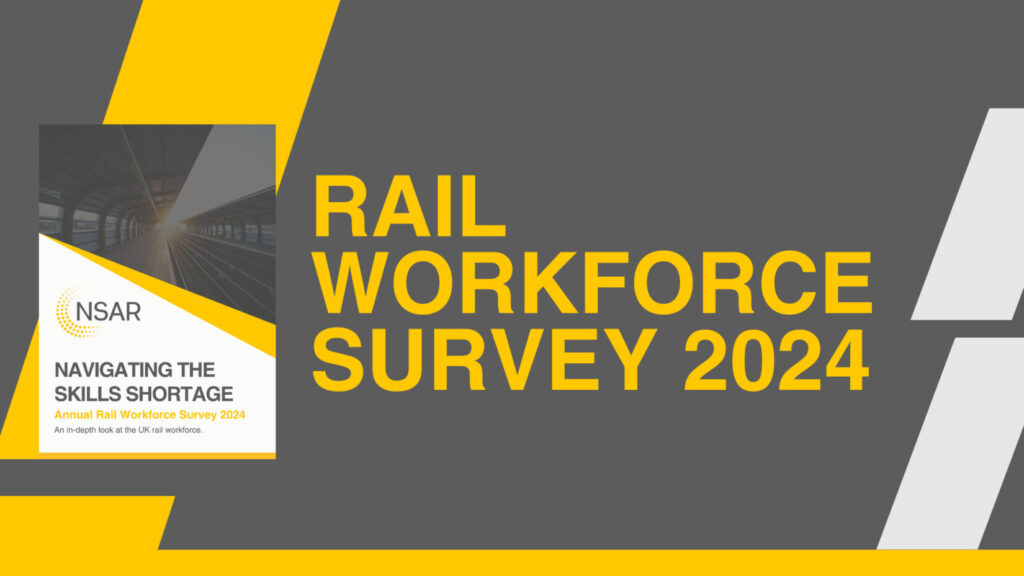The NSAR Rail Workforce Survey is an annual comprehensive survey of rail industry professionals.
Each year, railway organisations across the industry contribute by submitting their workforce data on demographics, job roles and work locations. The survey helps NSAR build the most complete and accurate representation of the UK rail workforce.
We are pleased to share the results of the 2024 survey with you. By making the survey findings accessible, NSAR aims to enable organisations to benchmark themselves to the industry and better plan for the future. We are happy to do a more detailed workforce analysis and industry benchmarking for interested organisations – don’t hesitate to contact us.
The headline findings are that skills shortages remain a major issue for the rail industry. The workforce has decreased by 9.4 over the last year and is facing a critical loss of experience and knowledge – the number of people leaving through retirement and other forms of attrition could be 90,000 workers by 2030. While proportions are improving, rail remains a male-dominated industry with lower numbers of people from ethnic minority backgrounds than national averages.
Addressing skills shortages and improving diversity provides large economic and social value opportunities. The report models these figures and provides recommendations to support the industry in achieving its goals.
Key insights from the 2024 survey:
- The workforce in rail has decreased over the last year by 9.4% to 220,500, predominantly in the supply chain.
- The workforce is slightly younger this year than last (the average age of the workforce has decreased from 45 years old in 2023 to 44.1 years old currently).
- The proportion of workers aged 25 and under has increased from 4.7% in 2023 to 6.3% in 2024. This represents an increase of 20.2% year on year.
- The proportion of workers aged between 31 and 49 has decreased from 50% in 2023 to 43.8% in 2024. This represents a decrease of 20.6% year on year.
- A third of our workforce aged 50 years old or over.
- We are facing a critical loss of experience and knowledge in the next seven years (the number of people leaving through retirement and other forms of attrition could be 90,000 workers by 2030).
- We remain a male-dominated industry (although gender diversity has increased to 17.4% in 2024, up from 16% in 2023).
- The proportion of workers in UK rail who are from an Ethnic Minority Group (EMG) has risen from 12.3% to 14.4%, representing an increase of 17.2% year on year.
Thank you to the organisations that provided us with workforce demographic information. Your input is invaluable in helping NSAR to help the industry understand where current and future workforce gaps are and develop strategic workforce plans to ensure a pipeline of skilled employees is available.
We hope the NSAR Rail Workforce Survey 2023 findings prove useful to your organisation and look forward to working with you as we collectively address skills shortages in the rail industry.

